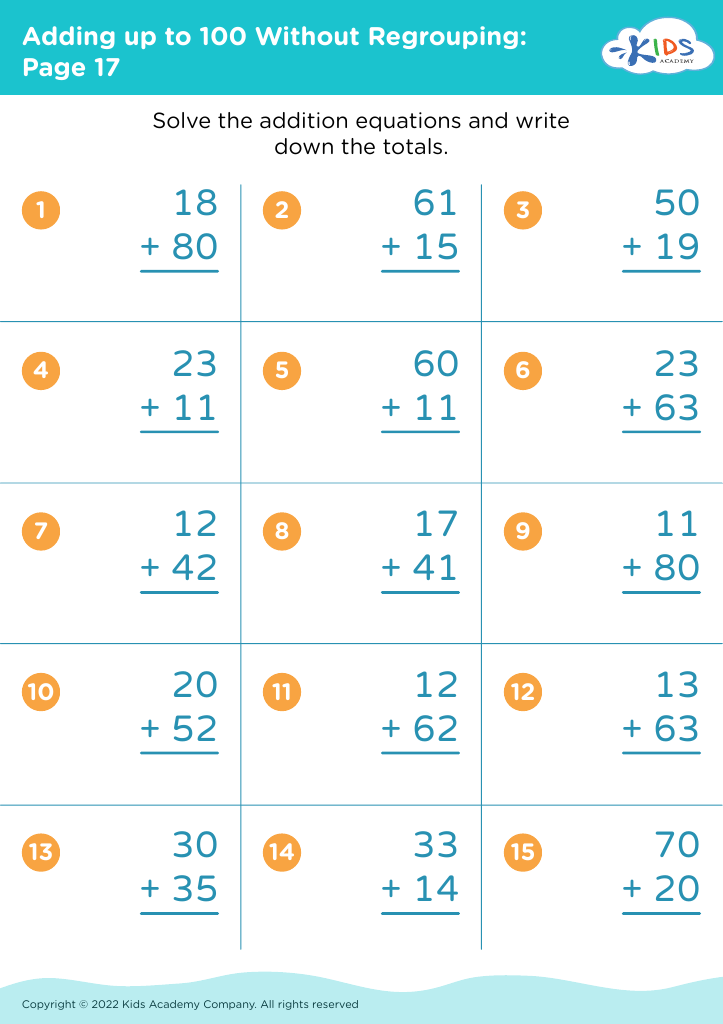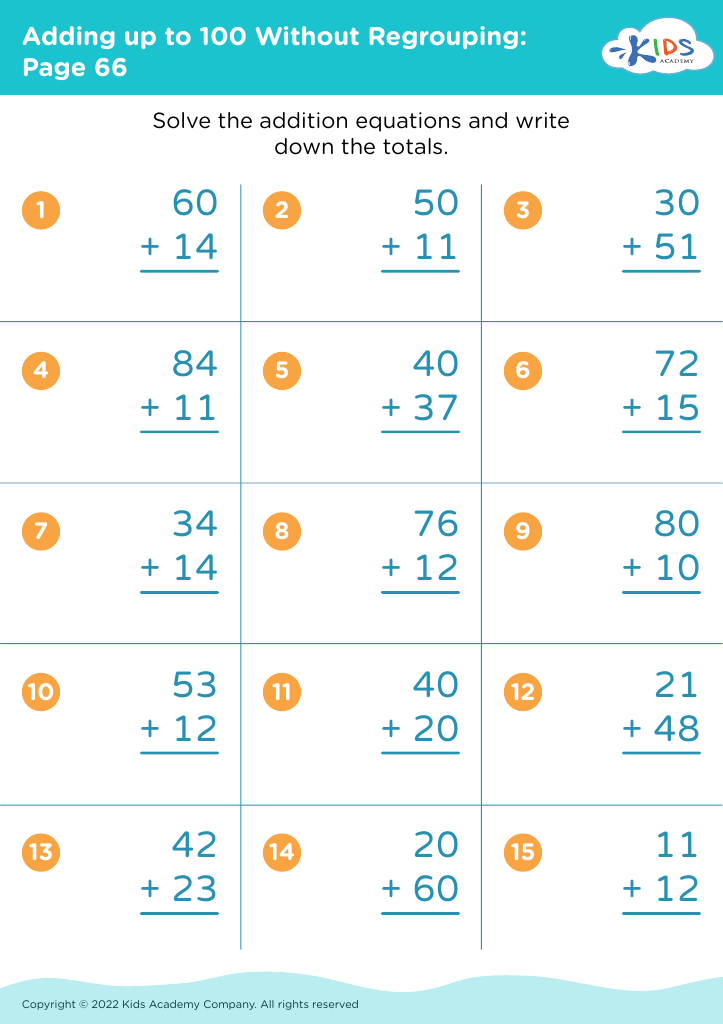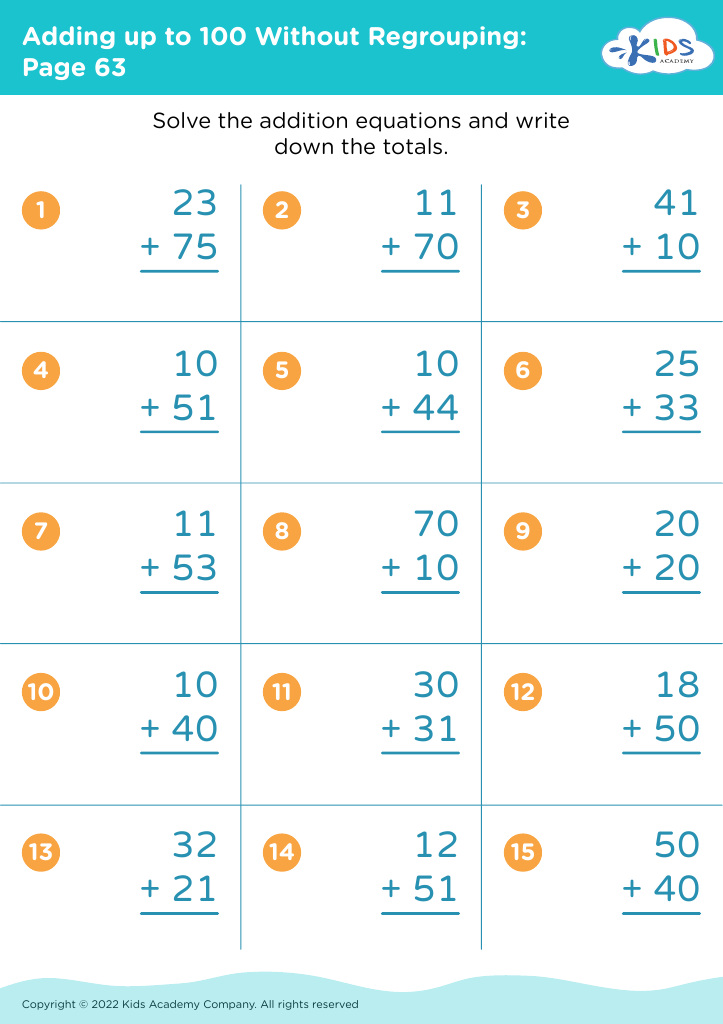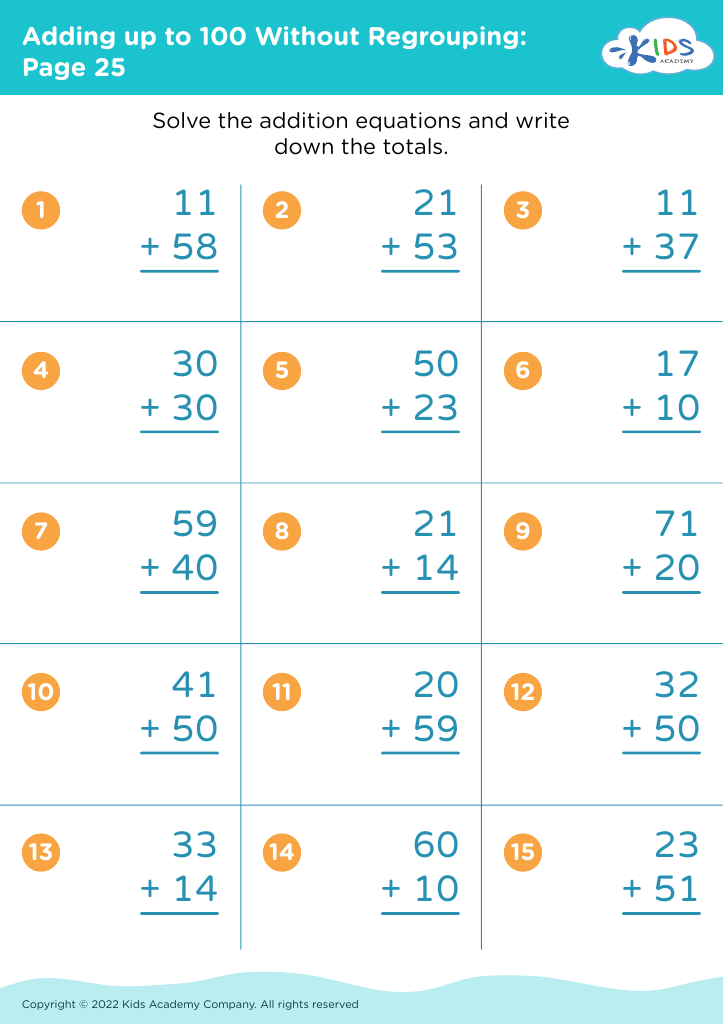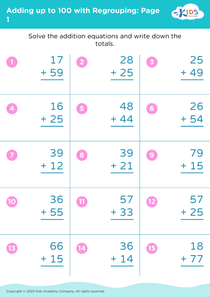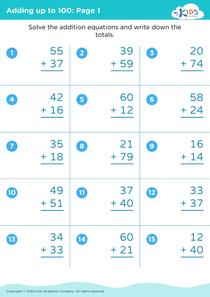Identifying shapes Grade 2 Adding up to 100 Without Regrouping Worksheets
4 filtered results
-
From - To
Enhance your Grade 2 students’ learning experience with our "Identifying Shapes" worksheets focused on adding up to 100 without regrouping. These engaging worksheets combine shape recognition with fundamental math skills, providing a fun and interactive way for young learners to solidify their understanding. Designed to support critical thinking, these activities encourage students to identify various shapes while practicing addition strategies. Aligning with educational standards, our materials cater to different learning styles and foster a love for math and geometry. Download the worksheets today and empower your students to confidently explore the world of shapes and numbers!
Identifying shapes and understanding how to add up to 100 without regrouping are crucial skills for second graders, and it's essential for parents and teachers to prioritize these concepts. Learning to identify shapes—such as circles, squares, triangles, and rectangles—helps children understand geometry, which is fundamental in developing spatial awareness and critical thinking skills. As they recognize and categorize shapes in their environment, they build a strong foundation for more complex mathematical concepts and problem-solving abilities later in their education.
Similarly, adding up to 100 without regrouping reinforces arithmetic skills and sets the groundwork for future math learning. When children master this essential skill, they gain confidence in their numerical understanding and develop mental math strategies that maintain the flow of calculations without relying on carrying numbers. This skill not only supports higher-level math fluency but also enhances logical reasoning, which is essential across all subjects.
By emphasizing these skills, parents and teachers can foster a positive learning environment, enabling children to develop a deeper understanding of mathematics and geometry. This nurturing support not only enhances academic performance but also instills a love for learning that will benefit children well into their future studies.
